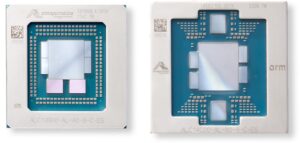Could IoT sensors, geo-tracking, customer interaction, and other data streaming services help your bottom line? Learn from these successful uses.

Image: iStock/undefined
When your company needs answers from big data in real time, the data is streamed so it can be filtered or sampled, aggregated and correlated—all to bring about a real-time answer to an important business question. “Streaming data is table stakes for the most interesting future use cases,” said Mark Brewer, CEO at Lightbend. “And that’s giving rise to the number of programming languages, frameworks and tools for building and running streaming data-centric applications.” However, streaming data—especially unstructured big data like what comes from Internet of Things (IoT) devices—can require knowledge of sophisticated processing architectures and investments in tools as well.
SEE: TechRepublic Premium editorial calendar: IT policies, checklists, toolkits, and research for download (TechRepublic Premium)
This is why real-time data streaming of big data like IoT, audio, video, etc., gives many companies pause before they start implementing. Invariably, the solidity of the business use case for streaming gets examined, as well as the likelihood of success and return on investment.
What companies have found so far is that there are several business use cases for data streaming that have really gone well. Here are a few.
Customer experience and interaction
When a customer visits a retail website, their website movements get tracked, as well as their purchasing preferences and choices. Recognizing and responding to consumer buying patterns in real time can be integrated into marketing so a customer looking at slacks could suddenly see an offer for matching shirts.
SEE: 5 Internet of Things (IoT) innovations (free Pdf) (TechRepublic)
The ability to analyze and predict what a buyer might be looking for next can produce additional orders and revenues that beef up the bottom line.
Environmental sensing
Ambient temperatures in data centers, conference rooms, offices, warehouses, refrigeration units, hospital operating rooms, etc., are all part of providing viable work space. If a sensor in a room suddenly detects temperatures or humidities that are falling outside of range, an auto-alert can be sent, and a maintenance person can be dispatched. The technology can save lives, prevent food spoilage, and keep data centers running.
SEE: What IoT is telling us about the trucking industry during COVID-19 (TechRepublic)
Systems geo-tracking and security
Who’s tapping into your systems and networks, when and from where are all important elements of security and governance. So is the ability to track foot traffic through plants and offices. In 2020, IBM reports that the cost of a single data breach was $3.8 million, so the savings in cost and company reputation are significant.
SEE: How digitalization is helping those who work in field service (TechRepublic)
Industrial IoT
A machine failure on an assembly line can cost $1 million per day. That failure can be prevented by an industrial sensor that can detect a machine failing in real time before it happens. This kind of preemptive maintenance keeps assembly lines running and saves millions of dollars.
SEE: Enough with the pilots: IoT in manufacturing is ready to grow at scale (TechRepublic)
Logistics
Logistics companies track trucks and cars on the road with IoT sensors. They are able to see which vehicles will arrive on time, or ahead of, or behind schedule. They can observe vehicle proximity and reroute a vehicle if another vehicle in the area suffers a breakdown. All of this is facilitated with IoT devices and sensors attached to vehicles that are monitored in real time. The savings can mount up. For refrigerated trucks alone, the late fee for one load of cargo can be $500.
SEE: UPS: How IoT devices are transforming supply chain logistics (TechRepublic)
Patient monitoring
Healthcare clinics and hospitals can now automatically receive vitals readings from patients who are at home. Alerts are issued if a patient’s data indicates a dangerous condition. No dollar amount can be placed on the value of a human life and the ability to save it because you’re getting real-time data.
SEE: Healthcare AI: How one hospital system is using technology to adapt to COVID-19 (TechRepublic)
Fraud detection
In a flash, a bank card processor can detect a fraudulent credit card transaction as soon as the perpetrator passes the card through a card reader. The transaction gets denied, and no money is lost. Worldwide, credit card fraud costs companies $22 billion per year, so the stakes are big.
SEE: Visa unveils AI tool to help stop digital identity fraud (TechRepublic)
How can real-time data help your business?
Although the use of real-time big data streaming is nascent for most companies, it is already paying off for companies in a wide array of industries.
What do these use cases have in common? A well-articulated business case that everyone, from management down, can visualize a great return on investment with delivery of tangible business value in the form of happy customers, cost savings, improved revenue, and an established history of use case success.
Also see
Source of Article




